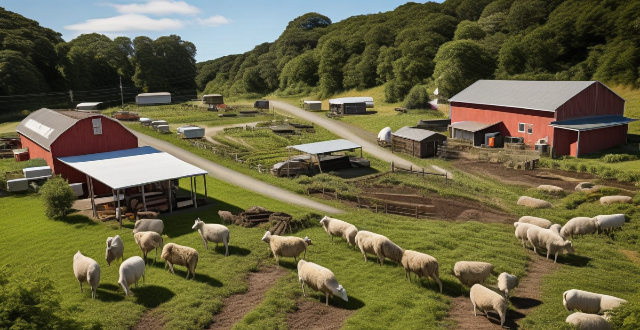Climate-induced natural disasters significantly impact global food distribution by causing crop failures, livestock losses, and infrastructure damage. Droughts and floods reduce water availability for crops or wash away topsoil, leading to reduced yields or complete crop failures. Examples include wheat, corn, and rice production disruptions in major producing regions. Floods and droughts also lead to the loss of livestock like cattle, poultry, and sheep, affecting meat, dairy, and egg supplies. Infrastructure damage such as roads, bridges, ports, and storage facilities disrupts the supply chain, making it difficult to transport and store food. Understanding these impacts is crucial for preparing and mitigating their effects on food systems.

Impact of Climate-Induced Natural Disasters on Global Food Distribution
Climate-induced natural disasters, such as droughts and floods, can have a significant impact on global food distribution. These events can lead to crop failures, loss of livestock, and damage to infrastructure, all of which can disrupt the supply chain and affect food availability and prices. In this article, we will explore the various ways in which climate-induced natural disasters can impact global food distribution.
Crop Failures
Droughts and floods can cause crop failures by reducing the amount of water available for crops or by washing away topsoil and nutrients. This can lead to reduced yields and even complete crop failures, which can have a ripple effect throughout the global food distribution system. When crops fail, it can lead to shortages of certain foods, which can drive up prices and make it difficult for people to afford basic necessities.
Examples of Crop Failures
- Wheat: Droughts in major wheat-producing countries like Russia and China can lead to reduced yields and higher prices for wheat worldwide.
- Corn: Floods in the Midwestern United States, a major corn-producing region, can cause significant losses in corn production, affecting both domestic and international markets.
- Rice: Monsoon rains in Asia, where rice is a staple food, can lead to flooding that damages rice paddies and reduces yields.
Loss of Livestock
Floods and droughts can also lead to the loss of livestock, which is another critical component of the global food distribution system. Livestock provides not only meat but also dairy products, eggs, and other animal-based foods. When livestock is lost due to natural disasters, it can take years to rebuild herds and flocks, leading to long-term disruptions in the supply chain.
Examples of Livestock Losses
- Cattle: Floods in Australia and Brazil, two of the world's largest beef exporters, can lead to significant losses in cattle populations, affecting global beef supplies.
- Poultry: Hurricanes and other extreme weather events can destroy poultry farms, leading to shortages in chicken and egg production.
- Sheep: Droughts in countries like New Zealand and the United Kingdom, where sheep farming is prevalent, can lead to reduced wool and lamb production.
Damage to Infrastructure
Natural disasters can also cause damage to the infrastructure that supports food production and distribution. This includes roads, bridges, ports, and storage facilities. When these essential components are damaged or destroyed, it can create bottlenecks in the supply chain that make it difficult to move food from producers to consumers.
Examples of Infrastructure Damage
- Roads and Bridges: Floods can wash out roads and bridges, making it difficult for farmers to transport their crops to market or for trucks to deliver food to stores and restaurants.
- Ports: Hurricanes and other severe weather events can damage ports, disrupting the flow of imported and exported goods, including food products.
- Storage Facilities: Droughts and heatwaves can cause power outages that affect refrigeration systems in storage facilities, leading to spoilage of perishable foods.
In conclusion, climate-induced natural disasters have far-reaching consequences for global food distribution. By understanding the potential impacts of these events on crop failures, livestock losses, and infrastructure damage, we can better prepare for and mitigate their effects on our food systems.